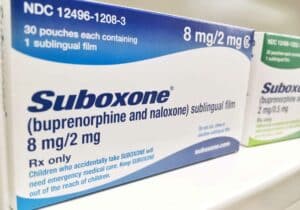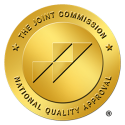Tramadol, an opioid medication, is designated for managing moderate to moderately severe pain. Unique among narcotic painkillers, tramadol also possesses antidepressant qualities that amplify its effectiveness in pain alleviation.
Extended use of tramadol, as with other opioids, can lead to dependence, where the body needs the drug to operate properly. Individuals who develop a dependence on tramadol and decide to stop taking it are likely to encounter withdrawal symptoms. While these symptoms can be daunting, undergoing medical detox can significantly alleviate the discomfort associated with tramadol withdrawal.
What Is Tramadol Withdrawal?
Tramadol withdrawal occurs when someone who has become dependent on the medication stops taking it, leading to a range of uncomfortable symptoms. Dependence can develop even with prescribed use, as the body becomes chemically adjusted to the drug’s presence due to continuous intake, sometimes in just a few weeks. This adjustment comes from the body needing higher doses of tramadol to achieve the same pain relief or euphoric feeling due to developed tolerance.
The brain, having gotten used to tramadol, undergoes chemical changes, leading to withdrawal symptoms that can last from 5 to 7 days once the drug is discontinued. The cessation of tramadol prompts the brain to compensate, resulting in an overdrive of certain processes and triggering withdrawal symptoms of varying intensities.
Medical advice often suggests gradually reducing tramadol intake rather than abruptly stopping to mitigate withdrawal symptoms, which are typically likened to those of the flu. However, in some cases, individuals may experience more severe withdrawal symptoms, including intense anxiety, panic attacks, and hallucinations.
When Does Tramadol Withdrawal Start?
Tramadol withdrawal begins as the drug dissipates from the body. For those dependent on tramadol, cessation of use leads to withdrawal symptoms. Standard tramadol tablets have a duration of 4 to 6 hours in the system, whereas extended-release versions last up to 24 hours. Given tramadol’s short-acting nature, withdrawal symptoms usually emerge between 8 to 24 hours following the final dose.
How Long Does Tramadol Withdrawal Last?
Tramadol withdrawal symptoms typically arise 8 to 24 hours following the final dose and can persist for 4 to 10 days if not managed. Abrupt cessation of tramadol is the primary cause of withdrawal.
Factors affecting the intensity of withdrawal include:
- The dosage being used
- The presence of physical dependence
Physical dependence indicates a requirement for the drug to avoid withdrawal discomfort, with the development time varying based on dosage and individual differences.
Tramadol, a synthetic opioid, can lead to particularly distressing withdrawal experiences. Gradually reducing tramadol intake, known as tapering, can help avoid withdrawal symptoms. In some cases, withdrawal discomfort can be mitigated by resuming opioid treatment at a lower dose, progressively decreasing under medical guidance.
Tramadol Withdrawal Timeline
Tramadol withdrawal shares similarities with other opioid withdrawals, generally presenting mild side effects. However, a notable study revealed that 12% of tramadol withdrawal cases exhibited atypical symptoms, including severe panic attacks, paranoia, and hallucinations.
- First 24 Hours: Symptoms typically emerge within this timeframe, influenced by factors such as health, genetics, dosage, and frequency of tramadol use.
- 24–72 Hours: Initial symptoms mirror those of other opioid withdrawals, including anxiety, body aches, watery eyes, sweating, insomnia, headache, and allergy-like symptoms like a runny nose.
- Days 4–7: Later symptoms may include gastrointestinal issues like stomach pains, diarrhea, and vomiting. Medical support can offer treatments to alleviate specific symptoms like nausea or leg discomfort.
- Days 8–14: Withdrawal from short-acting opioids like tramadol usually spans four to ten days, with symptoms subsiding within a week for many. Those with higher dependency may experience prolonged withdrawal.
- Beyond Two Weeks: Acute symptoms generally recede after two weeks, though some individuals may face extended withdrawal durations. Post-acute withdrawal syndrome can manifest, extending mental health-related symptoms like anxiety and insomnia for weeks or months post-use.
Unique to tramadol, its dual action as an opioid and its impact on serotonin levels can induce antidepressant withdrawal-like symptoms, such as flu-like symptoms, fatigue, dizziness, headache, nausea, and irritability, due to its similarities to SSRI antidepressants.
Tramadol Withdrawal Symptoms
Tramadol withdrawal symptoms often mimic those of the flu and are similar to withdrawal symptoms from other opioids and certain antidepressants.
Symptoms of tramadol withdrawal may include:
- Restlessness
- Cravings for tramadol
- Anxiety
- Sweating
- Difficulty sleeping
- Shivering
- Body aches
- Nausea
- Trembling
- Diarrhea
- Cold-like symptoms
- Goosebumps
These symptoms are prevalent in approximately 90% of tramadol withdrawal cases, primarily characterized by flu-like discomfort, restlessness, and cravings.
In a smaller percentage of cases, about 10%, individuals may experience less common but more severe withdrawal symptoms, such as:
- Hallucinations
- Paranoia
- Severe anxiety
- Panic attacks
- Disorientation
- Numbness and tingling in limbs
These intense symptoms underscore the complexity of tramadol withdrawal and the importance of seeking professional support during the detoxification process.
Factors Affecting Tramadol Withdrawal Symptom Duration
The duration and intensity of tramadol withdrawal symptoms vary widely among individuals, influenced by a range of factors. A person’s unique genetic makeup plays a crucial role in how their body metabolizes drugs and in the functioning of their brain chemistry. The withdrawal process can also be impacted by variables such as age, gender, and overall health. Moreover, those with a personal or family history of substance misuse or mental health issues may find themselves more susceptible to tramadol misuse and dependence, potentially experiencing more intense withdrawal symptoms. Mental health conditions like anxiety can further influence the severity and duration of withdrawal symptoms.
Combining tramadol with other substances, including alcohol, illicit drugs, or certain prescription medications, in search of an intensified high can complicate the withdrawal process significantly. Individuals who regularly use tramadol alongside other drugs face a heightened risk of severe side effects and may encounter a distinct set of challenges during detox and withdrawal, particularly if they are dealing with withdrawal from multiple substances simultaneously.
What are the Side Effects of Tramadol?
Tramadol, like all medications, can cause a range of side effects. Some of the most frequently reported side effects are:
- Drowsiness
- Dizziness
- Constipation
- Dry mouth
- Loss of appetite
- Nausea
- Vomiting
- Itching
- Joint pain
- Seizures
- Serotonin syndrome
While these side effects can occur with prescribed use, misusing tramadol increases the risk of experiencing severe side effects, as well as developing dependence and addiction. Ceasing tramadol use is the most effective way to avoid these risks.
Can You Quit Tramadol Cold Turkey?
Attempting to quit tramadol abruptly, or “cold turkey,” can be difficult due to the intensity of withdrawal symptoms. Without the guidance of medical professionals experienced in managing opioid detox, the discomfort may lead to resuming tramadol use.
Although it’s possible to stop using tramadol independently, seeking professional assistance is often more beneficial. Engaging in a medically supervised detox program provides access to medications designed to alleviate withdrawal symptoms and offers a secure, supportive setting for addressing opioid dependence.
Tramadol Detox
Given that tramadol is considered a less potent opioid, some individuals may feel capable of handling the withdrawal symptoms at home. Yet, for those facing severe or atypical withdrawal symptoms, it’s essential to seek professional medical assistance to ensure a safe detoxification process. Physicians may prescribe medication combinations such as buprenorphine-naloxone to alleviate the discomfort of tramadol withdrawal and address cravings effectively. Additionally, treatment programs are available to support individuals in resisting the urge to use tramadol again, offering strategies to replace old habits with healthier ones.
If you’re noticing signs of tramadol dependency or encountering distressing or potentially harmful withdrawal symptoms upon cessation, Iris Wellness Group is ready to assist with our outpatient detox services. Contact us to discover more about our detox and tramadol addiction treatment options. We’re here to support your journey towards recovery.
Tramadol Withdrawal Treatment at Iris Wellness Group
At Iris Wellness Group we specialize in providing targeted and compassionate treatment for individuals struggling with tramadol withdrawal in Chattanooga, TN. Recognizing the unique journey of each person affected by tramdol addiction, our dedicated team offers personalized care plans designed to address the specific needs and challenges of our clients. Our goal is to support individuals on their path to recovery, helping them achieve a healthier, substance-free lifestyle through a comprehensive approach to treatment.
Treatment Options for Tramadol Withdrawal:
- Outpatient Detox: Offers medically supervised detoxification services to safely manage withdrawal symptoms in an outpatient setting.
- Outpatient Treatment: Designed for those who require flexible treatment schedules without intensive daily commitments.
- Intensive Outpatient Program (IOP): Ideal for individuals needing more support than standard outpatient care, providing a structured therapy schedule while allowing patients to live at home.
- Partial Hospitalization Program (PHP): Serves as a bridge between inpatient care and outpatient treatment, offering comprehensive day-long therapy sessions for more intensive care without an overnight stay.
To complement our range of treatment options, Iris Wellness Group integrates a holistic approach to therapy, targeting the multifaceted aspects of tramadol addiction. Understanding that recovery is not one-size-fits-all, we tailor our therapy programs to meet the individual needs of our clients, focusing on not just overcoming addiction but also on fostering long-term wellness and resilience.
Therapies Offered for Tramadol Withdrawal:
- Cognitive Behavioral Therapy (CBT): Aims to identify and modify negative thought patterns and behaviors related to cannabis use.
- Individual Therapy: Offers a private setting for patients to explore personal issues and challenges related to their addiction.
- Group Therapy: Provides a supportive environment where individuals can share experiences and strategies for coping with addiction.
- Family Therapy: Engages family members in the treatment process to heal relationships and build a supportive home environment for recovery.
If you or someone you care about be grappling with tramadol withdrawal or addiction, it’s crucial to act now. Contact our tramadol rehab in Chattanooga, TN at 423-401-9630, to embark on the path towards a life free from drug dependence.










